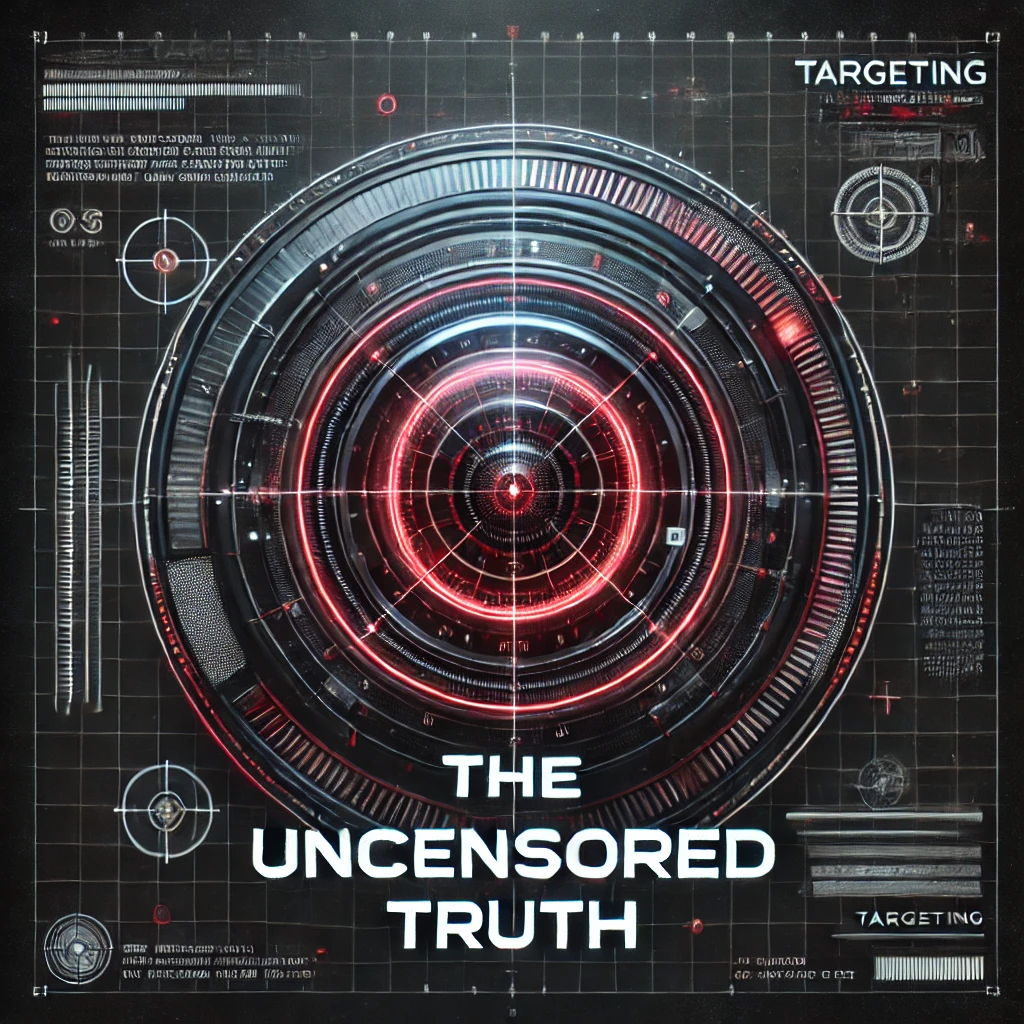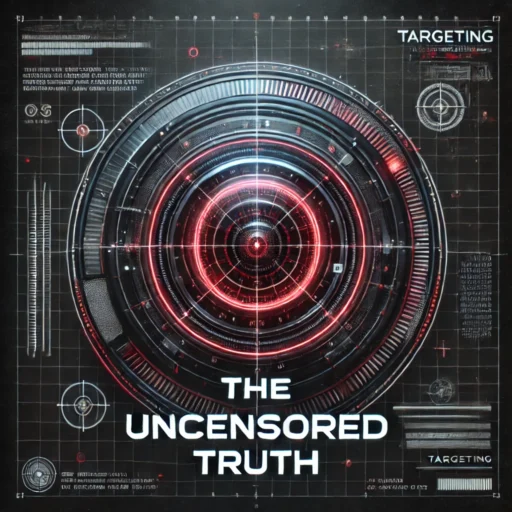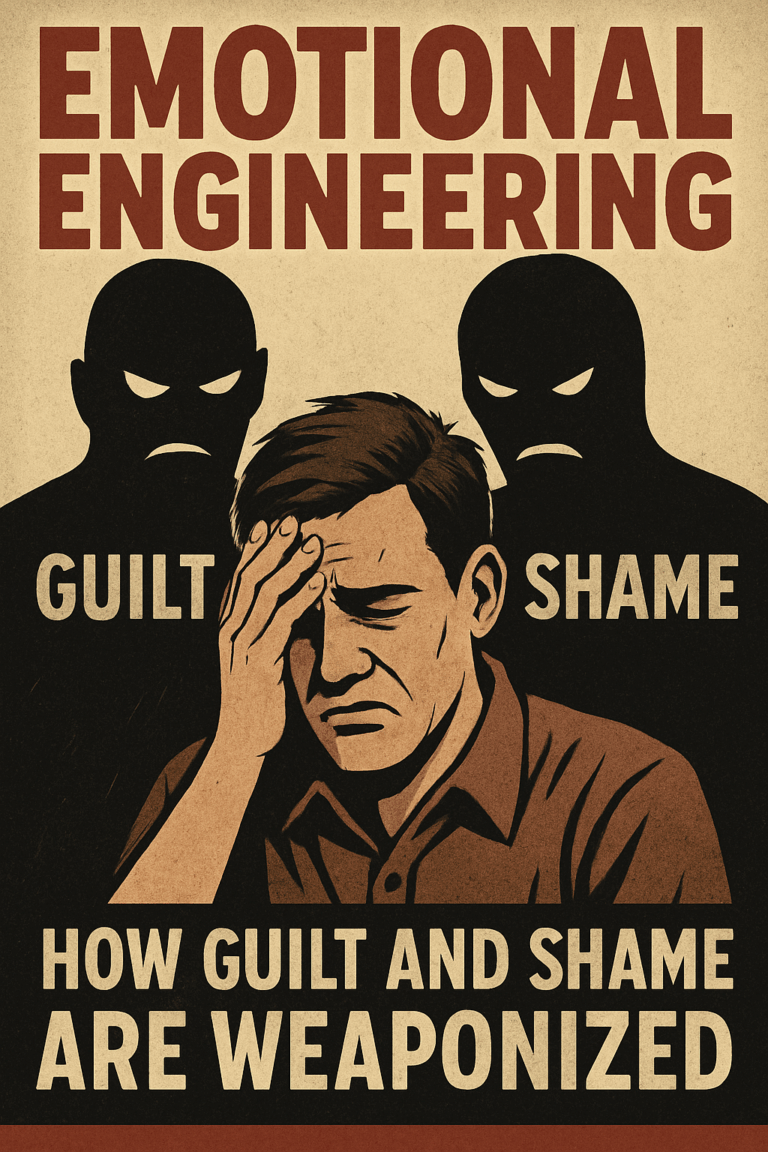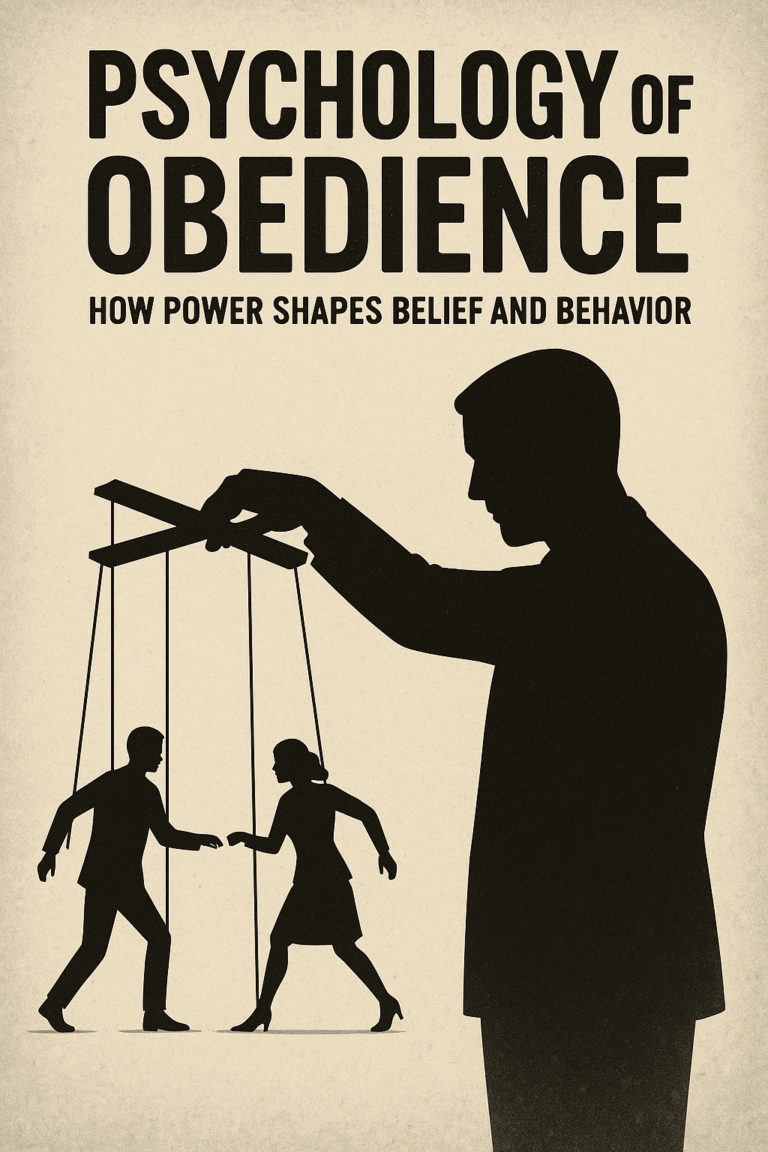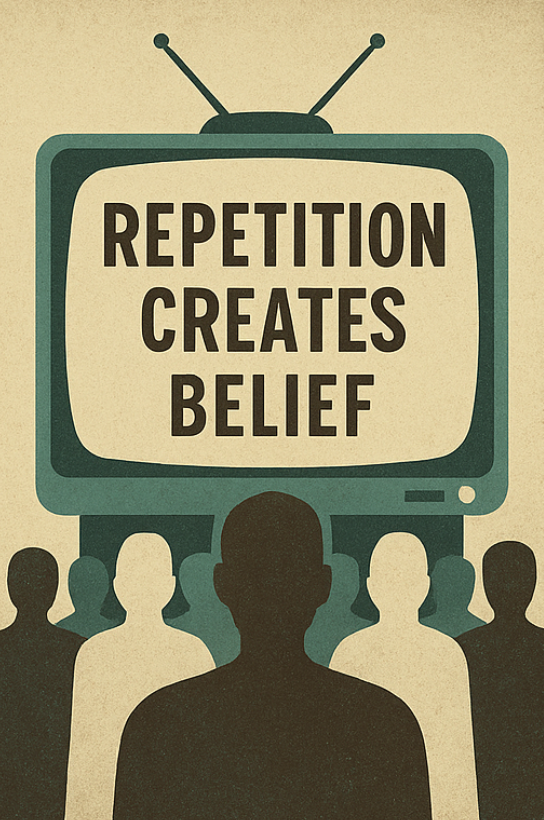Part 5 of our Emotional Engineering series explores how guilt and shame shape collective behavior. We examine how institutions – from governments and media to corporations – leverage these powerful emotions to manufacture consent and encourage conformity, drawing on psychology and philosophy to illuminate this subtle form of influence.
Emotional Engineering: Understanding Guilt and Shame
To ground our discussion, we must first clearly define guilt and shame, as these terms are often used interchangeably despite describing different experiences. Guilt and shame are both self-conscious, deeply social emotions, but they diverge in focus. Guilt is generally an uneasy feeling about a specific wrong action or failure – a sense of remorse for something one has done (or not done) that violates one’s values or harms others. In contrast, shame is a painful feeling about the self, a sense of personal defect or worthlessness in light of a shortcoming. In simple terms: guilt is feeling “I did something bad,” whereas shame is feeling “I am bad”. Guilt arises from specific behaviors; shame stems from how we see ourselves (often through the imagined eyes of others).
This distinction is crucial. A person experiencing guilt focuses on the action – the mistake or harm caused – and typically retains a sense of agency to make amends. Someone feeling shame, however, focuses on their self or identity, feeling fundamentally inadequate or exposed. Guilt tends to prompt reparative behavior (apologies, fixing the mistake) because the person believes the wrong action is changeable. Shame, by contrast, often leads to hiding, withdrawal, or defensiveness, since the person feels the flaw is inherent and not easily corrected. For example, if one breaks a promise, guilt may drive them to apologize and set things right; shame might make them avoid the people they let down out of humiliation.
It’s also important to note that these emotions, while painful, serve social functions. They act as internal regulators of behavior. Psychologists consider moderate guilt an adaptive emotion – it signals when we’ve strayed from our moral standards and can motivate us to correct course. Shame, too, can signal a breach of social norms, teaching us what is socially unacceptable. In healthy doses, these feelings contribute to conscience and social cohesion. However, guilt and shame can also be weaponized. When intentionally engineered, they become tools of influence. Emotional engineering in this context refers to the deliberate manipulation of emotional triggers – here, guilt and shame – to shape people’s beliefs and actions.
Throughout history and into the present, various institutions have recognized the power of these emotions. By inducing guilt or invoking shame in a population, leaders and organizations can subtly manufacture consent for policies, enforce cultural norms, or drive consumer behavior. In the sections that follow, we will critically examine how this form of emotional engineering operates in our psyche and society. We will maintain the distinction between guilt and shame as we analyze their use by governments, the media, and corporations in steering collective behavior.
Read more about it here
Psychological Mechanisms of Influence
Why are guilt and shame such effective levers for influencing human behavior? The answer lies in the psychological mechanisms underpinning these emotions. Both guilt and shame involve intense self-evaluation and concern about how one’s actions align with moral or social standards. When an external actor – be it a public message or an authority figure – triggers these feelings, it taps into powerful motivators of behavior: the desire to make amends (for guilt) or to restore one’s image and acceptance (for shame).
From a cognitive psychology perspective, guilt and shame appeals work by activating our internal monitoring system of right and wrong. The individual recognizes that their behavior (or even thoughts) are deviating from personal or societal standards. This creates a state of emotional discomfort. Guilt, in particular, activates empathy and a sense of responsibility. A classic finding in psychology is that guilt often leads to reparative actions – people try to relieve guilt by doing something to fix the wrong. For instance, witnessing a heartbreaking charity appeal about children in need may make a viewer feel guilty for their relative comfort, prompting a donation to “set things right.” Experiments show that communications arousing guilt (often called guilt appeals) can indeed increase compliance – people are more likely to agree to a request or follow a recommendation when they feel guilty about the issue at hand. A recent meta-analysis of persuasive messaging confirmed that guilt-based appeals have a measurable (if modest) effect on changing attitudes and behavior by inducing this urge to make amends. Notably, guilt is most effective when the message also provides a path to redemption – a specific action that the person can take to alleviate the guilt (donate, comply, apologize, etc.). Without that, guilt can turn to helplessness instead of action.
Shame, on the other hand, operates through our deep need for social acceptance and status. Being shamed – feeling that others judge us as bad or defective – threatens our fundamental need to belong. The psychological pain of shame is rooted in the fear of rejection or ostracism. Consequently, people will go to great lengths to avoid public shame. Internally, the anticipation of shame enforces conformity: we often police our own behavior to dodge any possibility of being shamed. For example, someone might refrain from voicing an unpopular opinion or wearing unconventional attire because they intuitively fear the shame of public disapproval. This self-censorship is exactly what makes shame a potent tool – if an authority can establish that certain behaviors or thoughts are “shameful,” individuals may preemptively conform to avoid even the prospect of humiliation.
However, the psychological impact of shame can be double-edged. While guilt often encourages accountability, shame frequently provokes a defensive reaction. A person shamed for their beliefs or lifestyle may become resentful or dig in deeper rather than change, especially if they feel attacked. Psychologist June Tangney and colleagues have found that high levels of shame (as a personality tendency) correlate with anger and blame outward, whereas guilt correlates with constructive behavior change. In other words, shame can backfire – instead of compliance, it might breed secret rebellion or psychological distress. Emotional engineering that relies on shame must therefore walk a fine line: too much public shaming can provoke backlash or trauma, as the shamed individual’s primary impulse is to escape or counterattack the source of shame to reclaim dignity.
In sum, the human mind is wired such that appropriate doses of guilt and shame can guide behavior – an insight not lost on those who wish to influence others. By understanding triggers (for guilt: highlighting a specific harm or inconsistency with values; for shame: invoking an audience’s judgment), strategists can design messages that push psychological buttons. This manipulation leverages our internal moral compass and social instincts against us, often below the level of conscious awareness. Recognizing these mechanisms is the first step in critically resisting undue emotional manipulation.
Read more about it here
Emotional Engineering: Sociological and Cultural Dynamics
Beyond individual psychology, guilt and shame operate on a collective level to shape group behavior and social norms. Sociology and anthropology have long observed that cultures may emphasize one of these emotions over the other as a primary means of social control. In so-called “guilt cultures,” people are taught to internalize moral codes so that conscience (and resulting personal guilt) governs behavior even when no one is watching. In “shame cultures,” maintaining honor and avoiding disgrace in the eyes of others is paramount, so public image (and fear of shame) guides behavior. These concepts, while simplified, highlight how societies harness emotional engineering in their norms and institutions.
Traditional examples contrast, say, Victorian Western society (often described as guilt-oriented due to the influence of Christian notions of sin and repentance) with feudal Japanese society (often described as shame-oriented, stressing honor and face). In a guilt-based context, a person might refrain from wrongdoing because “I would feel guilty and sinful.” In a shame-based context, a person might refrain because “My community would shame me and I’d lose face.” In reality, all societies use a mix of both guilt and shame to regulate behavior – they are two sides of the same coin of social conformity. What differs is how overt the social enforcement is. Shame is social; guilt is often solitary. A community that employs shame as a tool tends to have visible rituals of shaming (public apologies, penalties that expose wrongdoers), whereas a community relying on guilt emphasizes personal responsibility and perhaps private confession to alleviate guilt.
Modern mass society adds new wrinkles to these dynamics. With the rise of social media, we have arguably entered a new era of public shaming on a global scale – a “digital shame culture” that spans across traditional cultural boundaries. Through platforms like Twitter and Facebook, ordinary people collectively enforce norms by shaming those who violate them. Viral shaming campaigns, sometimes described as cancel culture or call-outs, can bring immense pressure on individuals – from celebrities to private citizens – who are deemed to have behaved badly. The threat of becoming the next viral villain can lead many to self-censor or conform to whatever norms the online community upholds, out of fear of public ridicule. In this way, social conformity is engineered by the crowd, not just by formal institutions. Emotional engineering has become somewhat democratized: any group with enough voices can amplify guilt or shame to enforce its values.
At the same time, traditional institutions still play a big role in setting the stage for what society considers shameful or guilt-worthy. Schools, religious organizations, and families transmit the standards that tell us what to feel guilty or ashamed about. For instance, a child raised with stern moral codes may feel guilt-ridden for even minor transgressions because their upbringing engrained a strong inner critic. Alternatively, a child raised in a tight-knit community might be more attuned to shame, constantly asking “What will people think?” Both scenarios show cultural conditioning: emotional engineering starts early, as communities instill values by linking them with emotional rewards (pride, honor) or punishments (shame, guilt).
An interesting sociological phenomenon is collective guilt and collective shame. Entire groups or nations can be influenced by these emotions. Collective guilt, for example, might emerge when a society comes to acknowledge wrongdoing in its past – such as war crimes or historical injustices – and its members feel a shared sense of guilt that can motivate collective reparative actions (apologies, policy changes, reparations). Governments or social movements can intentionally invoke collective guilt about these past harms to rally support for a cause (“We all have a responsibility to right this wrong”). Collective shame, on the other hand, might arise from national humiliation – say, a military defeat or a scandal – and can be harnessed to drive collective efforts to “restore honor” or, conversely, used by authoritarian leaders to justify crackdowns (telling the populace that dissenters bring shame to the nation).
We see, then, that guilt and shame are not merely personal feelings; they are social forces woven into the fabric of cultures. Emotional engineering at the societal level involves creating narratives about what is honorable or shameful, who should feel guilty for what, and how one can regain good standing. These narratives can unify communities and uphold order – but they can also marginalize or oppress. For example, stigmatizing certain behaviors (regarding them as shameful) can keep those behaviors rare, but it may also drive people who do them into hiding rather than seeking help (consider the shame historically attached to mental illness or to being a victim of certain crimes).
In a healthy society, guilt and shame are balanced by empathy and fairness – they are used to discourage truly harmful acts and encourage responsibility. In a less healthy society, they become blunt instruments to enforce conformity, stifle individuality, or scapegoat minorities. Being aware of these cultural dimensions of emotional control helps us remain critical of why we hold certain values: do we refrain from something because we believe it’s wrong, or merely because we fear judgement? And are those judgments truly in service of the common good, or engineered to maintain a particular power structure?
Read more about it here
Emotional Engineering in Government and Politics
Governments, whether democratic or authoritarian, have long recognized the utility of guilt and shame in managing populations. While laws and physical force are overt tools of control, emotional governance operates more subtly – by shaping the public’s values and feelings so that people choose to conform. This is often described as “manufacturing consent,” a term famously used by Edward S. Herman and Noam Chomsky to describe how media propaganda helps governments secure public agreement. Emotional appeals are key to this process. Political authorities craft narratives that make citizens feel that supporting a policy is the morally right thing to do (thus one would feel guilty not supporting it) or that opposing it is dishonorable or unpatriotic (thus one would feel ashamed to dissent).
One common tactic is invoking collective guilt or duty. Leaders might emphasize, for instance, a shared responsibility to sacrifice for the nation or for a noble cause. During wartime or national crises, governments often remind citizens of what they “owe” to their country or to the sacrifices of others. The implied message is that failing to do one’s part – whether buying war bonds, following rationing rules, or simply supporting the troops – would be a moral failing. Citizens are nudged to think, “If I don’t comply, I should feel guilty for letting others down.” This sense of guilt is engineered to preempt opposition and encourage voluntary cooperation. For example, public service campaigns might say “Only YOU can prevent wildfires” or “Stay home, save lives,” explicitly framing personal action as a moral obligation to others. Most people, not wanting the weight of guilt from harming their community, will fall in line.
On the flip side, political regimes use shame to discourage dissent and deviance. A government may publicly label protesters, whistleblowers, or opposing voices as traitors, selfish, or shameful in some way. By castigating dissenters as a disgrace to the nation or community, authorities signal to the broader public that these behaviors will result in social condemnation. In authoritarian states, this can take extreme forms: orchestrated public humiliations and “struggle sessions” force people who spoke out to apologize on camera, effectively scaring others into silence. A stark example comes from Chechnya under Ramzan Kadyrov, where ordinary citizens who dared to criticize the regime on social media were hauled on state television and compelled to abase themselves and recant their “wrongdoing” in front of the nation. The clear message to everyone else: criticize the leader and you will be shamed and degraded publicly. Such emotional spectacles instill fear of shame so deep that most people would never risk speaking out.
Even in democratic societies, softer versions of these tactics appear. Politicians may accuse their opponents or critics of being unpatriotic, effectively shaming them and anyone who might agree with them. During high-stakes political debates, one side might say the other side should be “ashamed” of their stance – framing it as morally beyond the pale. Voters then feel pressured to distance themselves from that shamed position. For instance, in the post-9/11 United States, those who questioned the push for war were sometimes met with “Have you no shame? Don’t you support our heroes?” – equating dissent with disloyalty. The fear of social scorn kept many dissenters quiet, thus manufacturing consent for the war effort without outright coercion.
It’s worth noting that governments also harness these emotions in positive ways – for instance, to encourage good citizenship. Patriotic pride is the inverse of shame that governments like to foster. But pride’s shadow is always the threat of shame if one falls short. A government might celebrate taxpayers as patriots (implying that not paying one’s taxes is shameful cheating), or praise compliance with public health guidelines as altruistic (implying that noncompliance is selfish and guilt-worthy). In these cases, emotional engineering can lead to beneficial outcomes (higher tax compliance, healthier public behavior), which is why it’s so insidious – the ends can be socially good even if the means are manipulative.
However, there are ethical concerns whenever guilt or shame are deliberately invoked by those in power. Such tactics can slide into propaganda, bypassing rational debate by leveraging emotional reflexes. They can also create divisions and scapegoating: a government that rallies the majority by shaming a minority (e.g. an ethnic group, or “the unpatriotic”) is engaging in dangerous manipulation that can fuel hatred. Citizens must be vigilant about leaders who constantly tell them how to feel. Are we being informed about a policy’s merits, or guilt-tripped into accepting it? Are we being encouraged to discuss differences, or shamed into unanimous conformity? Emotional engineering in politics often works because people don’t realize it’s happening – they just suddenly feel a surge of righteousness or fear of isolation. By bringing these tactics to light, we can better maintain independent judgment.
Read more about it here
Emotional Engineering in Media and Public Discourse
The media – news outlets, television, and now social media – is the primary vehicle through which engineered emotions spread through a population. Media narratives heavily influence what we collectively feel guilt or shame about. In fact, modern mass media often serves as the stage on which public guilt and shaming dramas play out, amplifying their scale and impact.
One major role media plays is agenda-setting with moral framing. By choosing which stories to highlight and how to frame them, media can cue the audience’s emotional response. For instance, consider how news programs cover social issues or crises: showing images of suffering victims will naturally evoke empathy and guilt in viewers (“How can we allow this?”). Repeated coverage of an issue with a moral angle can instill a sense of public guilt that “we must do something.” A classic example is media coverage of humanitarian disasters – images of starving children or war-torn villages often spur waves of donations and calls for intervention, driven by viewers’ guilt and compassion. While this can mobilize needed aid, it’s also a form of emotional engineering: producers know that certain visuals and narratives will tug heartstrings and prompt action. The risk is that emotions can be manipulated to support simplified solutions or political agendas (“invade this country to save those children”), bypassing more nuanced debate.
Media also engages in naming and shaming. Journalists often shine a spotlight on individuals or companies that violate societal norms, effectively subjecting them to public shame. Investigative reports about corruption, scandal, or crime don’t just inform the public – they frequently carry an undercurrent of moral condemnation (“Shame on these wrongdoers”). This is part of the media’s watchdog role, holding powerful actors accountable by arousing public outrage. However, in doing so the media sometimes sensationalizes and oversimplifies complex issues into morality plays of villains and victims. The audience’s emotional reaction – anger, disgust, moral indignation – can be out of proportion or misdirected if the reporting is biased. Still, fear of media exposure and the public shame that follows can strongly deter misconduct. A corporation polluting a river, once splashed across headlines as an “environmental villain,” will rush to change and make amends under the glare of collective shame.
In the age of social media, the dynamic of shame has intensified. Platforms like Twitter enable rapid, crowd-sourced public shaming of anyone who attracts negative attention. A person who posts an offensive remark or a video of bad behavior might find themselves virtually pilloried by thousands of strangers overnight. This phenomenon, often referred to by writer Jon Ronson as the “internet shame storm,” demonstrates emotional engineering on a grassroots level. Each participant in a viral shaming might feel justified by righteous anger or a sense of enforcing justice, but collectively it can become a mob mentality. Social media algorithms even encourage outrage and shaming, as these emotionally charged engagements drive clicks and sharing. In a sense, the architecture of our online media environment is engineered to amplify emotions – outrage, fear, guilt, and shame – because they are engaging and contagious.
There is a critical debate about whether these public shamings via media actually lead to positive change or simply destroy people’s lives and coarsen discourse. On one hand, publicity and shame have brought genuine wrongs to light (e.g., the #MeToo movement’s exposure of sexual harassment relied on public outrage and shame to hold perpetrators accountable). On the other hand, the excesses of cancel culture have shown that indiscriminate shaming can cause severe harm and inhibit open conversation. Psychologists warn that people who are shamed on a grand scale can experience trauma, and observers note that witnessing frequent shamings can create a climate of fear where everyone is walking on eggshells, afraid to express themselves honestly.
From an emotional engineering standpoint, media wielding shame and guilt is extremely powerful but requires responsibility. A fair media in a healthy democracy should inform and educate, possibly invoking appropriate moral emotions when warranted – but it should also provide context and avoid manipulative tactics. Unfortunately, in the competition for attention, many media outlets choose to weaponize emotions freely: framing every disagreement as a moral battle, every opponent as either guilt-ridden or shameless. The result can be a polarized public, each side convinced the other is morally bankrupt – a kind of tribal emotional engineering where each tribe’s media shames the other side to keep its own members in line.
As consumers of media, recognizing these patterns is vital. If you find yourself feeling a sudden surge of guilt or the urge to shame someone after watching the news or scrolling social media, it’s wise to pause and ask: Am I being purposefully manipulated? Is the situation really as black-and-white as presented? Critical thinking and empathy can temper the blunt force of media-driven guilt and shame, keeping public discourse nuanced rather than hysterical.
Read more about it here
Emotional Engineering in Corporate Marketing and Consumerism
Emotional engineering is not confined to the public sphere of politics and media; it is also a staple strategy in corporate marketing and consumer behavior. Advertisers and public relations experts are essentially professional emotion engineers – they craft messages specifically to make consumers feel certain ways that will drive them toward a purchase or brand loyalty. Among their arsenal, guilt and shame are prominently featured, especially in certain industries like health, beauty, and social marketing campaigns.
Marketing appeals to guilt are everywhere once you start noticing. Advertisers often try to make the consumer feel that not buying a product or service is somehow letting someone down or failing a duty. A classic example is marketing aimed at parents: an ad might subtly imply that “good parents” provide a certain experience or product for their children. If you aren’t doing so, the suggestion is that you should feel guilty – you’re not being the best parent you could be. The remedy conveniently offered is to buy the product to assuage that guilt. The charity sector also uses guilt-based appeals routinely: fundraising commercials show heart-wrenching scenes of suffering, implicitly telling the viewer that for the cost of a cup of coffee you could save a life – so how could you not? The viewer is nudged into a state of uncomfortable guilt which is only relieved by picking up the phone and donating. Studies have confirmed the effectiveness of such tactics: people donate more when made to feel personally responsible for a victim’s plight. Guilt is a reliable motivator because, as one marketing expert noted, unlike fear (which depends on an external threat), guilt is an “ever present” internal nag – we carry our conscience with us, and it can be awakened at any time.
Shame-based marketing is equally prevalent, though perhaps more insidious. This approach targets our insecurities and the image we present to others. The beauty and personal hygiene industries historically thrived on mild shame induction: suggest to the consumer that they might be seen as unattractive, old, or unclean – unless they use the advertised product. Think of deodorant, mouthwash, or cosmetic ads that create anxiety about bad breath, body odor, or not looking youthful. The underlying message is “Don’t be that person who is gross/ugly/etc.” – a direct play on shame. In fact, the very invention of certain product markets involved engineering new forms of shame. A famous example is how early 20th-century Listerine ads popularized the term “halitosis” to describe bad breath and shame people (especially women) into using mouthwash lest they be unmarriageable. By defining a new “shameful” personal failing, the marketing created demand for a solution. Similarly, fashion and luxury advertising often implies that your worth or status (hence acceptance by others) is tied to owning the right things – driving people to spend in order not to feel left out or inferior.
In the realm of social marketing (campaigns intended to improve public health or social behavior), guilt and shame have been deliberately employed as well. Governments and NGOs running anti-smoking, anti-drunk-driving, or pro-environment campaigns have debated using these emotions to jolt complacent individuals into change. For example, an anti-drunk-driving poster might say “Friends don’t let friends drive drunk” – a guilt appeal to anyone who might fail to stop a friend from doing so. Or a climate change campaign might talk about “carbon footprints” and guilt-trip consumers about their daily habits (“Each plastic bottle you throw away will haunt the planet for centuries”). Some campaigns use shame by association: consider advertisements that portray a smoker being scorned by their loved ones or a polluter being labeled a “bad neighbor.” The intent is to attach social stigma to the undesirable behavior, so people will avoid it to avoid shame.
Marketers must be careful, however, because as noted earlier, excessive guilt or shame can backfire. If an ad makes people feel too guilty or ashamed, they might tune it out, resent it, or even engage in the opposite behavior as a form of defiance. Good marketing uses a “golden mean” of emotional pressure: enough to spur interest or action, not so much that the audience feels attacked or hopeless. A health ad that makes smokers feel utterly ashamed of themselves may just make them angry or fatalistic (“I’m already a pariah, why bother quitting?”). Research in advertising psychology suggests guilt appeals work best when coupled with a solution that seems attainable – “feel bad for this behavior, but here’s an easy way to do better” – rather than just inducing shame with no way out.
Interestingly, corporations also use emotional engineering internally. Company cultures sometimes deliberately instill guilt or shame to boost productivity or compliance. For example, workers might be shamed for not meeting sales targets (“look at these top performers – why aren’t you like them?”), or made to feel guilty for taking time off (“the team needed you, and you weren’t there”). Such tactics can create a coerced form of loyalty and extra effort, though often at the cost of employee well-being. It’s a reminder that emotional manipulation is not only a public relations tactic but can occur in any power dynamic, including employer-employee relationships.
From a critical standpoint, consumers today need to be aware of when their emotions are being engineered by marketing. If an advertisement makes you feel suddenly inadequate or anxious about what others think of you, pause and analyze that feeling – it’s likely not entirely spontaneous, but rather the result of careful image-crafting. By recognizing guilt and shame appeals, consumers can reclaim agency: you can decide whether the implied standard is one you actually value, or one you’re willing to ignore. Ethical marketing is possible – some campaigns use positive emotions and authentic information rather than guilt trips – but the prevalence of guilt/shame appeals means we must all guard our emotional autonomy when engaging with ads.
Read more about it here
Ethical and Philosophical Perspectives
Having explored the many ways guilt and shame are deliberately used to influence behavior, we arrive at an important question: Is this practice ethical or fair? The answer is not black-and-white. Emotional engineering using guilt and shame lies in a gray zone, morally speaking, because it depends on intentions, outcomes, and the degree of manipulation.
From a philosophical standpoint, one could argue (as utilitarians might) that if exploiting these emotions leads to a greater good – for example, unity in crisis, or more responsible citizens – then it can be justified. Indeed, we often praise appeals that encourage people to “do the right thing” for the sake of others, even if those appeals induce guilt. A public service announcement shaming people out of drunk driving may save lives; its manipulative nature is arguably warranted by the result. Similarly, encouraging a sense of guilt for historical injustices might be a necessary step toward restorative justice and reconciliation. In these cases, guilt and shame serve as tools for moral progress.
On the other hand, deontological ethics would object that manipulation is wrong in principle because it undermines individual autonomy and rational decision-making. When institutions play puppet-master with our emotions, they are not respecting us as free agents capable of reason – they are bypassing reason. Immanuel Kant, for instance, might say that treating people as means to an end (even a good end) by pushing emotional buttons fails to respect their dignity. There is something coercive about engineering consent through shame or guilt, even if no physical force is used. It raises issues of consent itself: true consent (in politics, in consumer choice) should be informed and voluntary, not engineered through psychological pressure.
One must also consider the consequences for individuals. Chronic guilt and toxic shame can be extremely damaging to mental health. If a society or authority relies too much on these levers, it can create a populace that is anxious, depressed, or plagued by low self-worth. Philosophers like Friedrich Nietzsche harshly criticized the way culture (especially religious morality) inculcated guilt in people, calling it a form of cruelty we inflict on ourselves under the influence of external authorities. Nietzsche, in On the Genealogy of Morality, even traced the invention of guilt to power structures – suggesting that societal elites (originally creditors, later priests) fostered guilt to control others, turning natural instincts inward. His perspective casts a cynical light: emotional engineering with guilt is an ancient strategy of social control, one that hobbles the human spirit. Michel Foucault, another thinker, examined how modern institutions use subtler forms of surveillance and expectation to cause individuals to regulate themselves – essentially internalizing guilt/shame to the point that overt punishment isn’t needed. These critiques remind us that while guilt and shame can enforce order, they can also be tools of domination that keep people docile.
At the same time, other philosophers like Aristotle acknowledged a place for something akin to shame in ethical development. Aristotle suggested that feeling appropriate shame (aidos in Greek) can be educative for the young – it prevents them from acting rashly, and over time they learn virtue such that they no longer need shame as a motivator. In other words, an initial external shame can be internalized into genuine virtuous character. This would be an argument for the measured use of shame in shaping conduct, ideally with the goal that eventually people do the right thing from their own conviction, not fear of shame. Similarly, contemporary thinkers on civic virtue might argue that a bit of guilt for not contributing to society (paying taxes, helping neighbors) is a sign of a healthy conscience and social trust.
The non-partisan approach to evaluating emotional engineering is to recognize that all sides of politics and all sectors of society engage in it to some degree. It is easy to accuse one’s ideological opponents of “shaming and guilt-tripping people,” but harder to see when one’s own side does it. A critical, fair perspective acknowledges that a progressive environmental campaign and a conservative law-and-order campaign might both use emotional engineering – one making people feel guilty for wasting energy, the other making people ashamed of being lenient on crime, for instance. Rather than dismissing one and not the other, we should examine each case on its merits and be wary of tribalism clouding our judgment. The key is transparency and proportionality: Are the emotional appeals based on truthful information and used in moderation? Or are they distorting facts and inflaming emotions purely to win compliance?
Ultimately, the complexity of guilt and shame as social tools means we should neither wholly embrace nor outright reject their use. They can bind communities together around shared values, or they can be wielded like a cudgel to silence and subjugate. As individuals, cultivating emotional intelligence about these feelings is crucial. That means being aware of when our sense of guilt or shame is genuine (stemming from our own values and empathy) versus when it is externally imposed or manipulated. Critical thinking, open dialogue, and empathy are antidotes to the darker side of emotional engineering. By discussing openly when we feel guilt or shame about an issue, we can discern if those feelings are pointing us toward a just cause or being exploited to shut down debate.
In conclusion, guilt and shame undeniably shape collective behavior in profound ways. They are woven into the strategies of governments maintaining order, media narratives that unite or divide us, and marketing campaigns that drive our consumer choices. This “Emotional Engineering” operates quietly, steering societies as if by an invisible leash on our conscience and ego. Recognizing this does not mean we become cynical or emotionless – rather, it empowers us to ensure that we govern our emotions, instead of letting institutions uncritically govern us through those emotions. A critically aware society can still experience righteous guilt or constructive shame, but it will also question: Who wants me to feel this, and why? By asking such questions, we take a step toward a more mindful collective life, where consent is real and conformity is a choice, not a conditioned reflex.
Read more about it here
